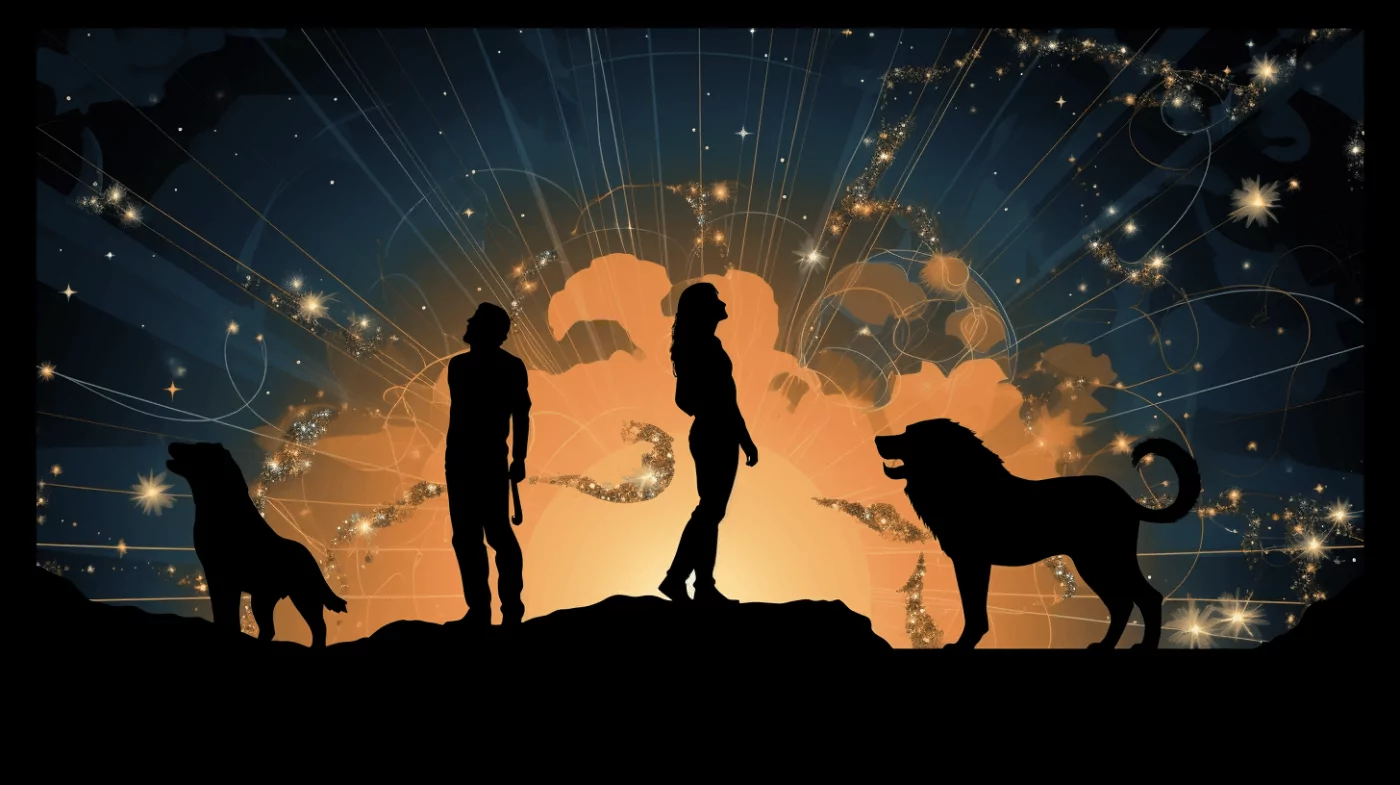Truth & Goodness
More Than Just Fur and Tails: What We Discovered About Dogs and Cats in 2025
04 January 2026

Osho (1931-1990), an Indian spiritual master, once posited the idea that “existence is a continual change.” However, if everything is subject to transformation, can anything constant be found in the world? Humans are beings who mature and grow in response to life’s challenges, sometimes up until death; they undergo various trials and confront numerous situations daily. Life demands flexibility and openness in their reactions and adopted attitudes. How does one find oneself in such a thicket of changes?
Olga Tokarczuk, a Polish Nobel laureate born in 1962, states in one of her books: “People change, outgrowing old situations like children outgrow clothes. Time flows and changes everything.” With these words, she expresses a timeless truth: human life is subject to constant variability. Each day brings new situations, unfamiliar internal states, and a variety of thoughts.
Our daily encounters with different people, and the relationships we form, change us. As time moves on, the reality around us undergoes further transformations, echoing the ancient Greek philosopher Heraclitus’ (540-480 BCE) observation, “you cannot step into the same river twice.” In this continual change, is it possible to find a direction for these ongoing transformations? Can a desired horizon of change and a perspective conducive to human development in these changes be identified?
Friedrich Nietzsche (1844-1900) tried to address these questions by presenting his vision of transformation during our earthly existence. The German philosopher focused on internal metamorphosis, relating it to personality. He describes this process as follows: “I shall name you three metamorphoses of the spirit: how the spirit becomes a camel, the camel – a lion, and finally, the lion – a child.” Therefore, human life undergoes three stages we must (or can?) pass through to fully develop our identity. Each of these stages is symbolized by a specific figure. What did Nietzsche mean by these symbols?
“The burdened spirit takes upon itself all that is heaviest, and like the camel that treks through the desert, so it hastens to its own desert,” writes the philosopher. The beginning of our life’s journey is like the camel stage, associated with carrying specific burdens on our backs and obediently marching in the caravan of other camels. These animals are doomed to follow commands and submit to the authority of those stronger than themselves. Nietzsche believes this represents the first stage of our life’s journey, where we are reliant on following the orders, directives, and commands of others.
You may also like:
At this stage, we lack our own opinions, either unable or unwilling to make decisions for ourselves; we prefer to blend into the crowd and humbly follow those who set the direction of our aspirations. We are unable to free ourselves from the influence (and often the burden) of what defines us externally, such as traditions, culture, upbringing, religion, and customs. We accept these passively and move forward, often unaware of how they define us, and sometimes even determine our path.
At some point in our maturation, there comes a moment for deeper reflection on our life so far. Some call this stage rebellion, others experience it as separation, a “cutting of the umbilical cord.” In all these descriptions, the key is the need for freedom and the ability to make sovereign decisions. “But in the solitary desert, the second transformation occurs: the spirit becomes a lion, desiring to claim freedom and to be the master in its own desert.” At this stage of transformation, a person discovers free will and the possibility of shaping their life according to their own script. No longer wanting to be a camel – one of many, unreflectively marching in the caravan – they seek to free themselves from what others have imposed and forced upon them, desiring to define their own existence.
However, as Nietzsche observed, at this level, a person still does not know how to choose. For now, they discover that they can replace “must” with “want,” and this is the essence of this transformation. The philosopher writes: “to create new values – that the lion will not yet achieve; but to create for oneself freedom for new creation – that the might of the lion can do.” How often do we discover this inner freedom, yet still not know what to do with it or how to use it? For many, this is a pivotal moment of change in their lives. They begin to understand that they no longer want to be, nor can they be, slaves to others. Tired of living under someone else’s dictate, rebelling against old rules, they start to set their own boundaries. They know what they do not want, but not yet what they do want, and thus often blunder in this transformation, groping in the dark, before they discover what they truly lacked.
Then comes the third transformation in human life – the most important, in Nietzsche’s view – symbolized by the child. “But tell me, brothers, what can the child do that even the lion could not? Why must the predatory lion become a child? The child is innocent, and forgetting, a new beginning, a game, a self-rolling wheel, a first movement, a holy ‘yes’.” The child embodies everything that is pure, innocent, and new. It acts naturally and spontaneously, accepting what the world offers.
Curious about everything, it holds no fear or limitations. Nietzsche sees this as the most significant transformation in human existence. The child’s creativity, bravery, and affirmation of the world should be a model to follow. The child uses its freedom creatively, not yet guided by the limitations, instructions, and expectations of others. It is absolutely free, meaning it is ready to create the world according to its vision and to forge new values – as Nietzsche summarizes.
How many of us reach this stage in our lives? It is often challenging to let go of what has shaped us over the years, our daily routines, and start building our world anew, based on our own principles and in harmony with ourselves, not the expectations of others. Every person has their own limitations, fears, weaknesses, but the image of the child suggests freeing oneself from all this and accepting everything that happens to us. Because every experience serves a purpose, shows us something, and reveals something within us. In this sense – everything is good.
In presenting such a perspective on changes in human life, Nietzsche leaves many key questions unanswered. Must every person undergo such a path? How much time should be devoted to each transformation? Is there a proportionality or symmetry between them? Each change entails specific costs: emotional, existential, material… What price must sometimes be paid to make a change in one’s life and is it always worth it?
However, one thing is certain: if we concede Nietzsche’s point and accept that human life is a series of successive changes, or – one great change every new day – then there is no escape from working on oneself. Since variability is the only constant law governing our existence, our task is to read it skillfully and consciously. To steer one’s life well, one must be alert. Because each new day brings something new, changes something in me, and thus expects something from me. It will depend on me whether I correctly decipher the codes of reality. Dorota Terakowska (1938-2004), a Polish writer and journalist, once stated: “Time is movement, change.” Therefore, one must not stand still.

Truth & Goodness
04 January 2026



Zmień tryb na ciemny